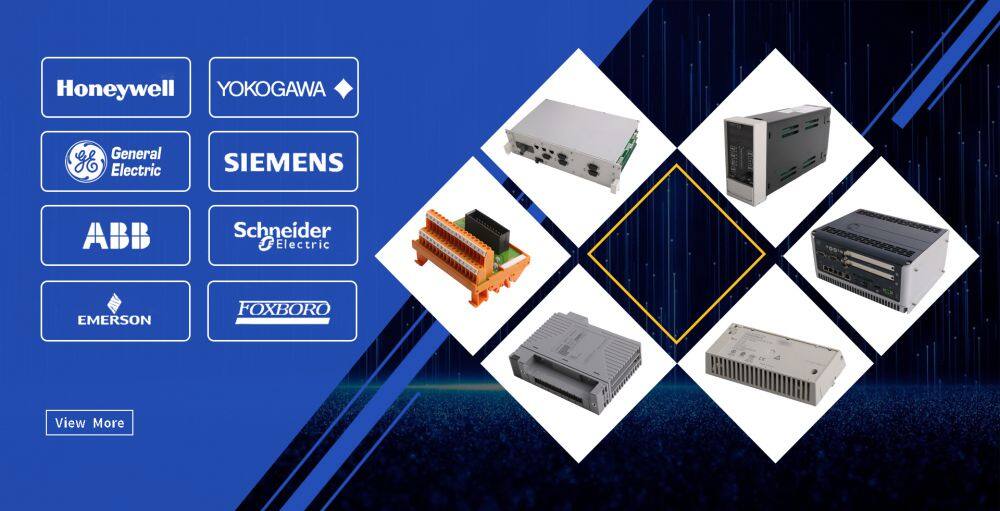Home > Blog > The deep integration of AI and industrial automation: Making "software-defined manufacturing" a real
-
 Claire
Hi there! Welcome to my shop. Let me know if you have any questions.
Claire
Hi there! Welcome to my shop. Let me know if you have any questions.
Your message has exceeded the limit.

The deep integration of AI and industrial automation: Making "software-defined manufacturing" a real
2025-08-30 10:40:25
In modern manufacturing, "intelligence" is no longer just a slogan; it is a real trend. Artificial Intelligence (AI) is deeply integrating with industrial automation, driving "Software-Defined Manufacturing" (SDM) into factories and achieving a double improvement in production efficiency and product quality.
What is "Software-Defined Manufacturing"?
Traditional factories often encounter problems such as low production efficiency, large quality fluctuations, and low equipment utilization rate. Software-defined manufacturing uses software to control the entire production process, enabling data-driven intelligent decision-making and dynamic optimization, allowing the production process to operate autonomously like a "living system".
In simple terms: AI is the brain of the factory, while automated equipment are the factory's hands and feet. Working together, they make the factory smarter and more efficient.
The core applications of AI + Automation
Intelligent Sensing
Collect production data through industrial IoT sensors and machine vision, and monitor the production line status in real time.
Example: The AI vision system can detect tiny defects in electronic components to ensure that each product meets the standards.
Intelligent decision-making
AI analyzes large amounts of data to automatically optimize production plans and equipment parameters, achieving optimization of production rhythm and process.
Example: An automotive manufacturing enterprise uses AI to adjust the assembly rhythm, resulting in a 15% increase in production capacity and a 20% reduction in defect rate.
Intelligent Execution
Industrial robots and automated equipment operate autonomously according to AI instructions, reducing human intervention and enhancing production efficiency.
Example: Collaborative robots (Cobots) work together with workers to complete high-precision tasks, improving safety and productivity.
Predictive Maintenance
AI analyzes the operation data of equipment to predict potential failures and carry out maintenance in advance, avoiding unexpected downtime.
Example: A steel enterprise uses AI to predict the maintenance cycle of the furnace, reducing equipment downtime by 40%.
The benefits brought by AI and automation
Improve production efficiency: Optimize processes, reduce waste and downtime.
Improve product quality: Conduct real-time monitoring and adjustment to ensure product consistency.
Reduce operating costs: Predictive maintenance + energy consumption optimization, saving resources.
Enhance flexible production capacity: Respond quickly to market changes and achieve small-batch customized production.
Data-driven intelligent decision-making: Enhancing management accuracy and production reliability.
Industry Case
Siemens Electronics Factory: AI optimizes the welding robot's path, increasing production efficiency by 12% and reducing rework rate by 18%.
Baosteel Intelligent Factory: Through AI predictive maintenance, equipment downtime has been reduced by 40%, and annual maintenance costs have decreased by approximately 20%.
Sany Heavy Industry's production line: AI supports multi-model mixed-line production, increasing production capacity by 15% and significantly enhancing production flexibility.
Future Trends
Digital Twin + AI: Virtual modeling of the entire production process, optimization of decisions and scheduling.
Edge computing and cloud collaboration: Combining real-time data processing and remote optimization to enhance production flexibility.
Autonomous intelligent factory: The production line autonomously schedules operations, achieving "unattended" production.
Green intelligent manufacturing: Reducing energy consumption and waste, achieving sustainable development.
The deep integration of AI and industrial automation has made "software-defined manufacturing" a reality. Through intelligent perception, decision-making, execution and predictive maintenance, the production efficiency and product quality of factories can be significantly improved. The future intelligent factories will not merely be automated; they will be "living factories" that can self-optimize and make decisions, bringing a new growth impetus to the manufacturing industry.
Mobile:+86 18950128464 (whatsapp)
E-mail:sales5@askplc.com
Wechat:+86 18950128464
| AB | 330180-90-00 | AB | 1734-OB8S |
| AB | 1771-ASB/E | AB | 1734-IB8S |
| AB | 1756-IV16 | AB | 1794-TB3T |
| AB | DSTA002B 3BSE018317R1 | AB | 1769-OA16 |
| AB | 1784-PCMK | AB | 1746-IV32 |
| AB | 2711P-T12C15D1 | AB | 1794-L33 |
| AB | 1784-PCMK/B | AB | 1784-U2DN |
| AB | 1771-KX1 | AB | 1756-IH16I |
Tags: AI Meets Industrial Automation

